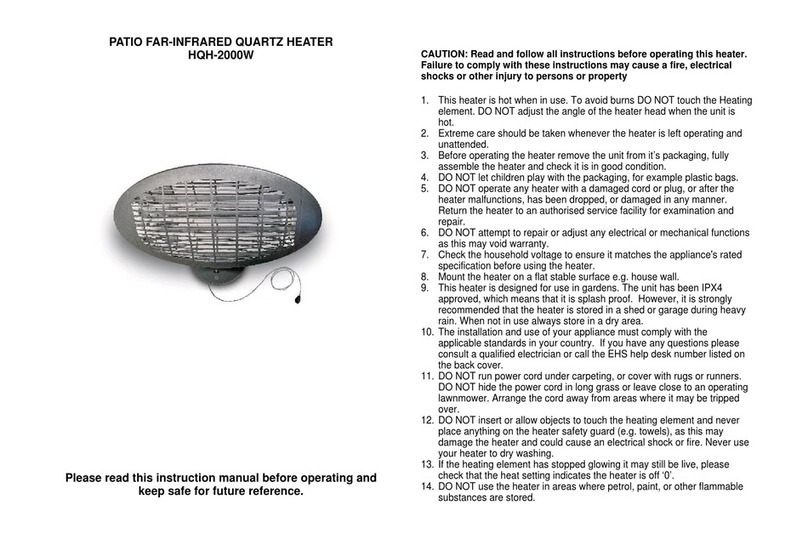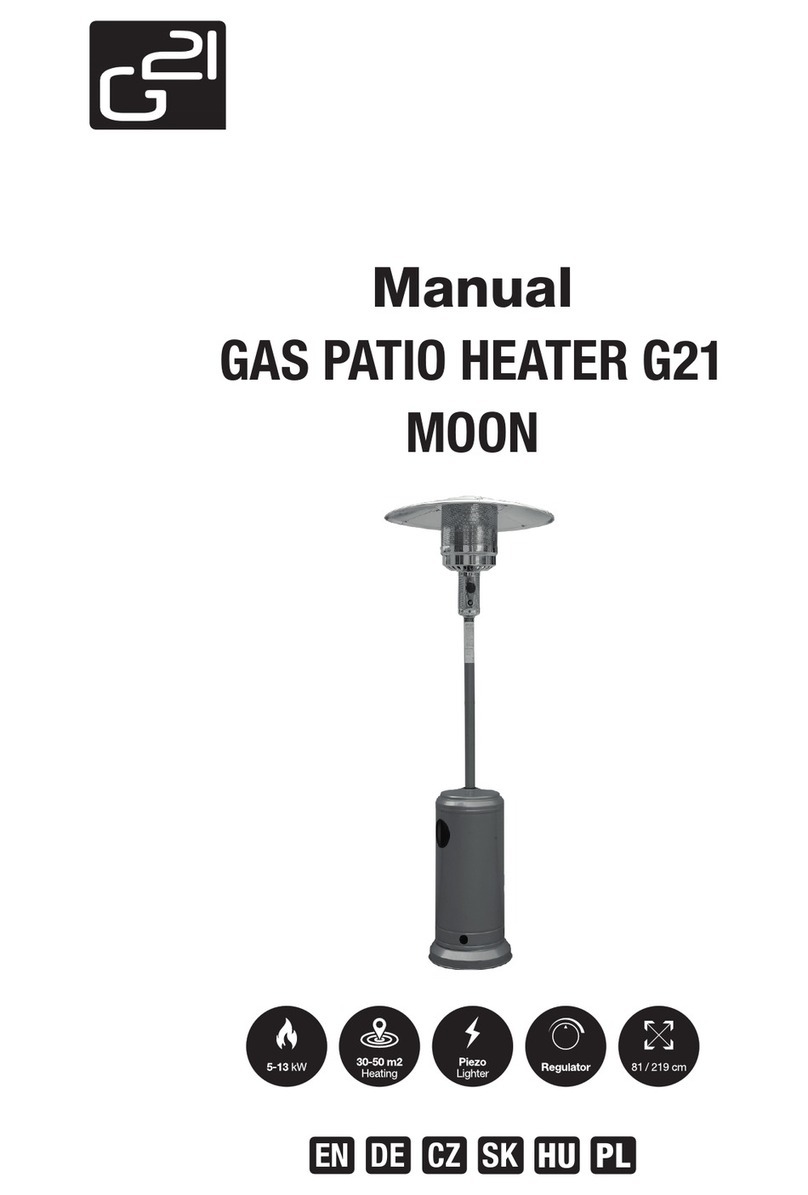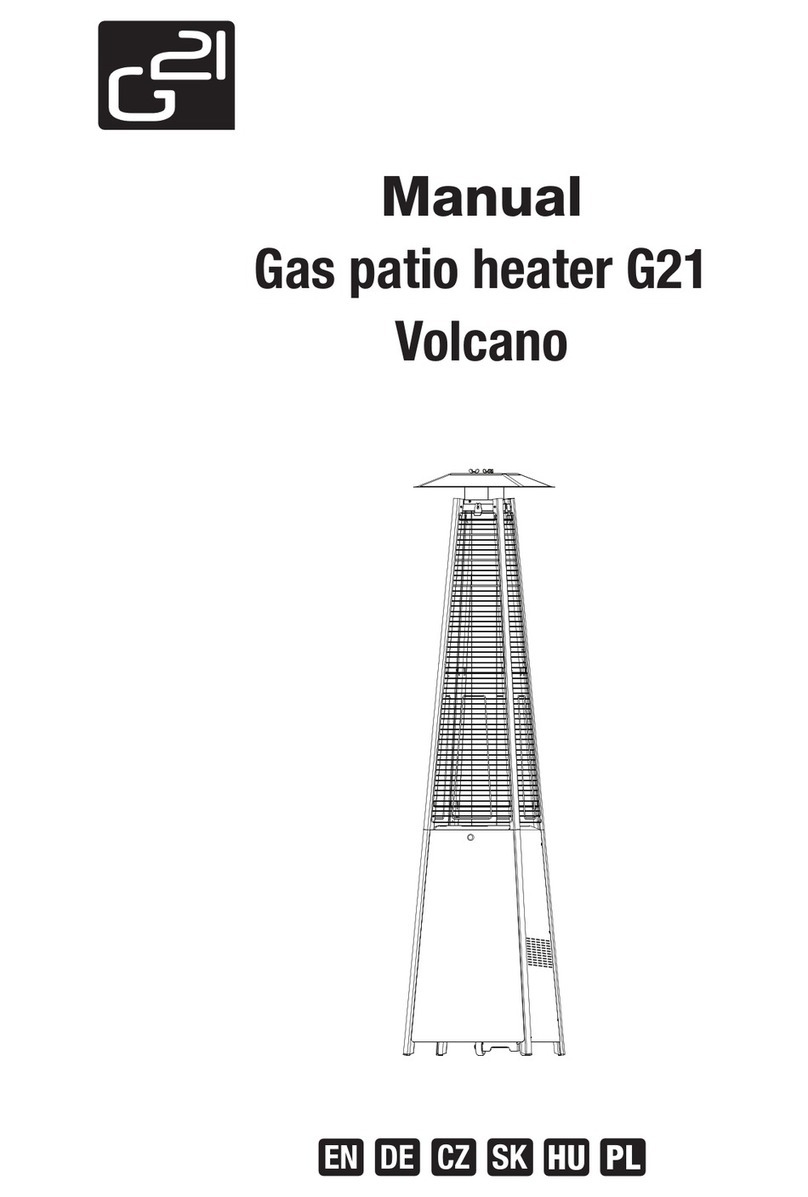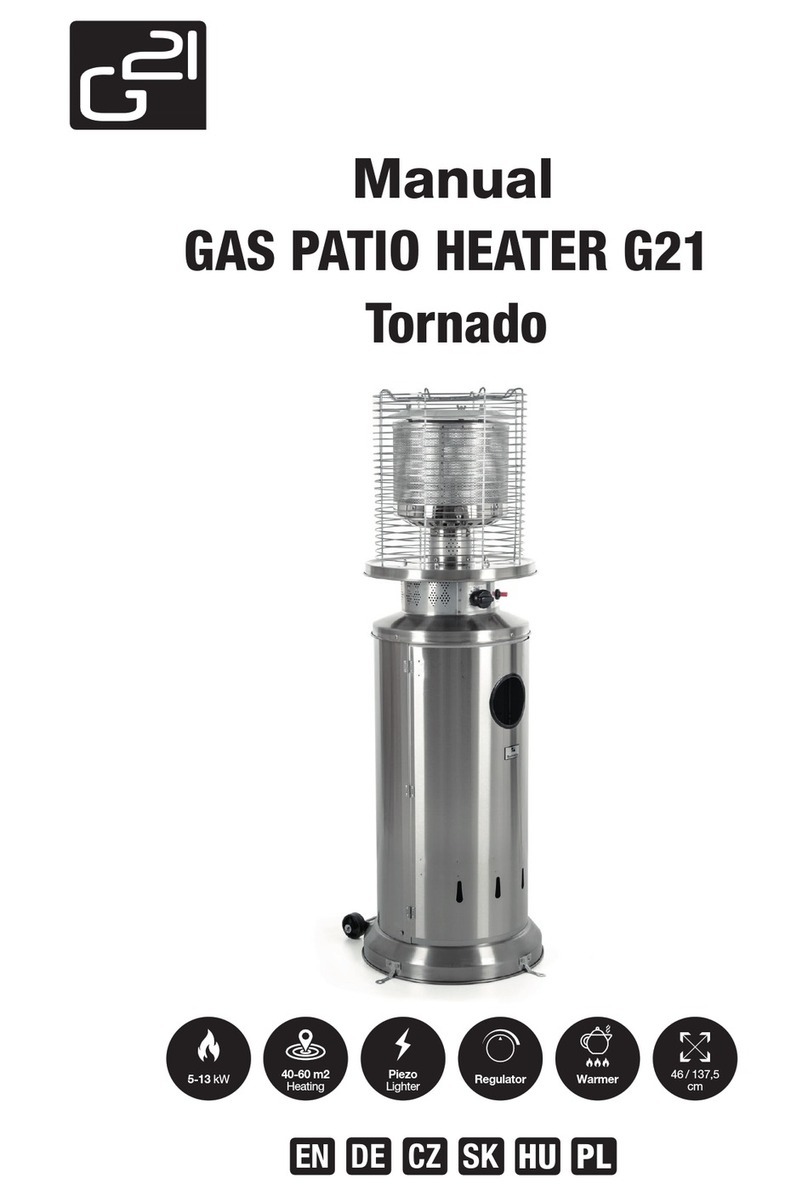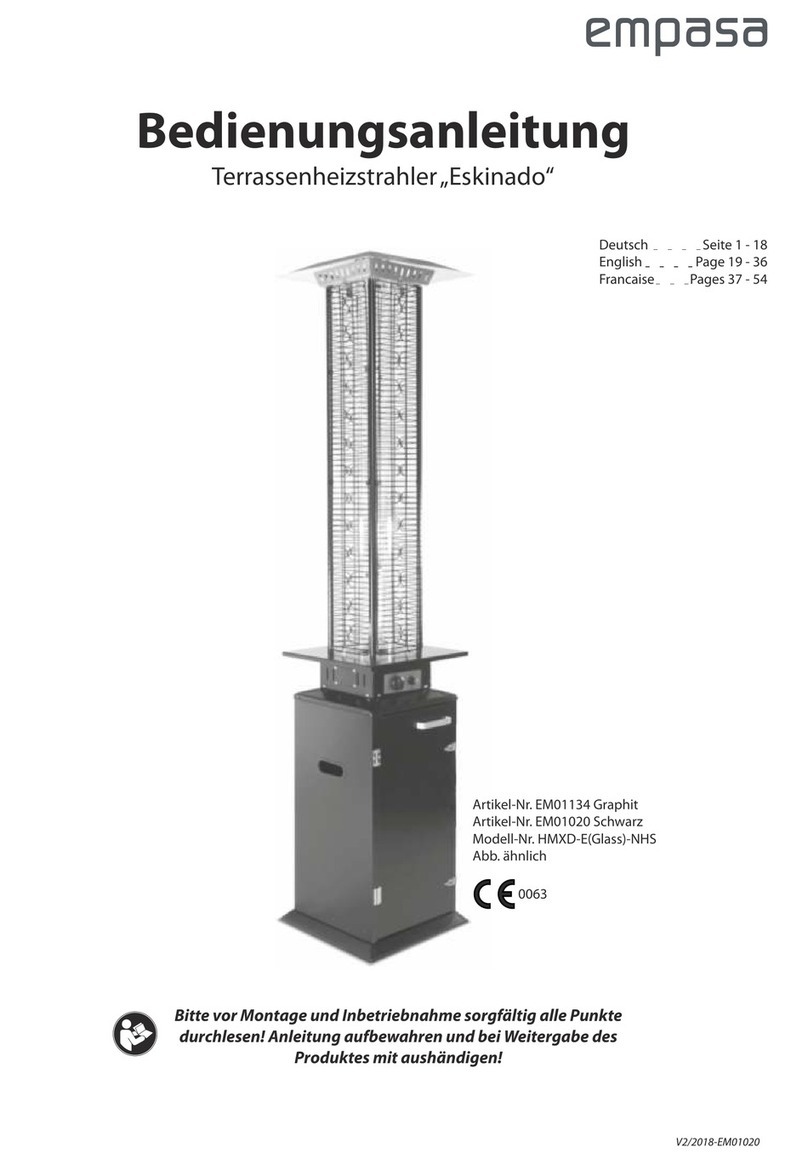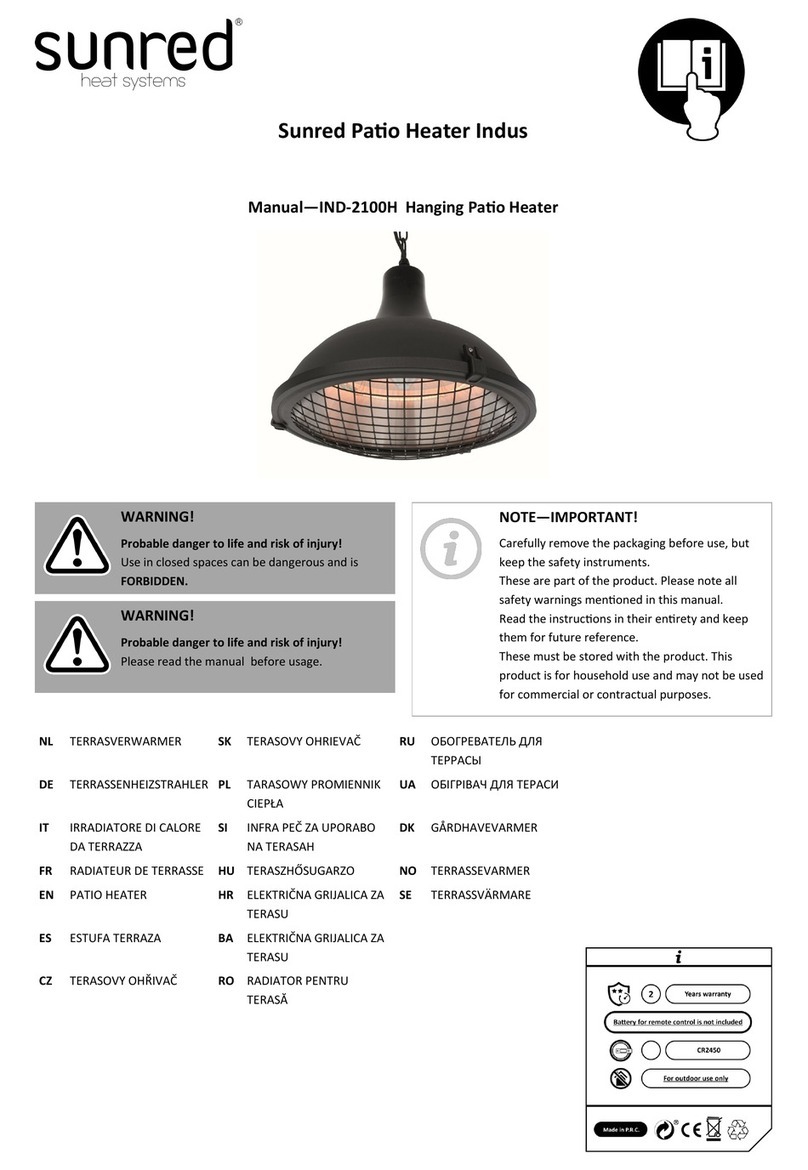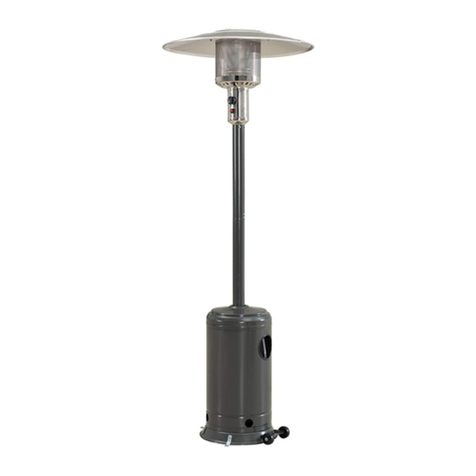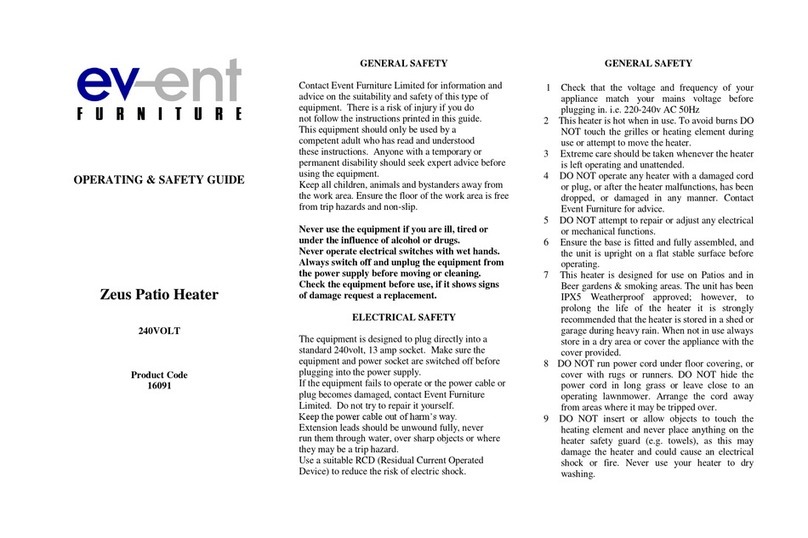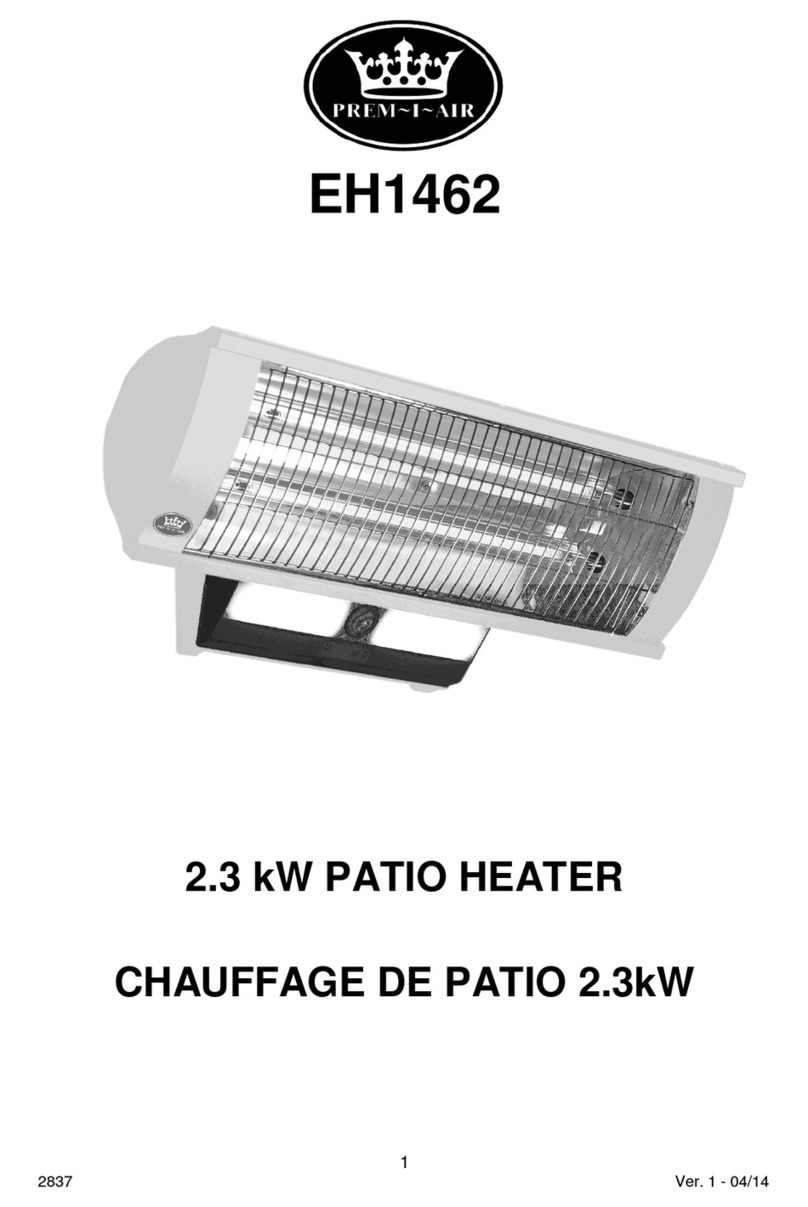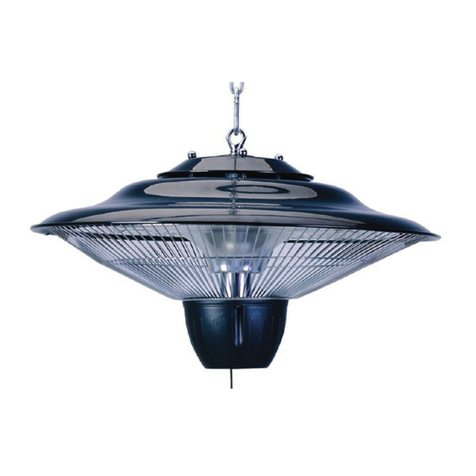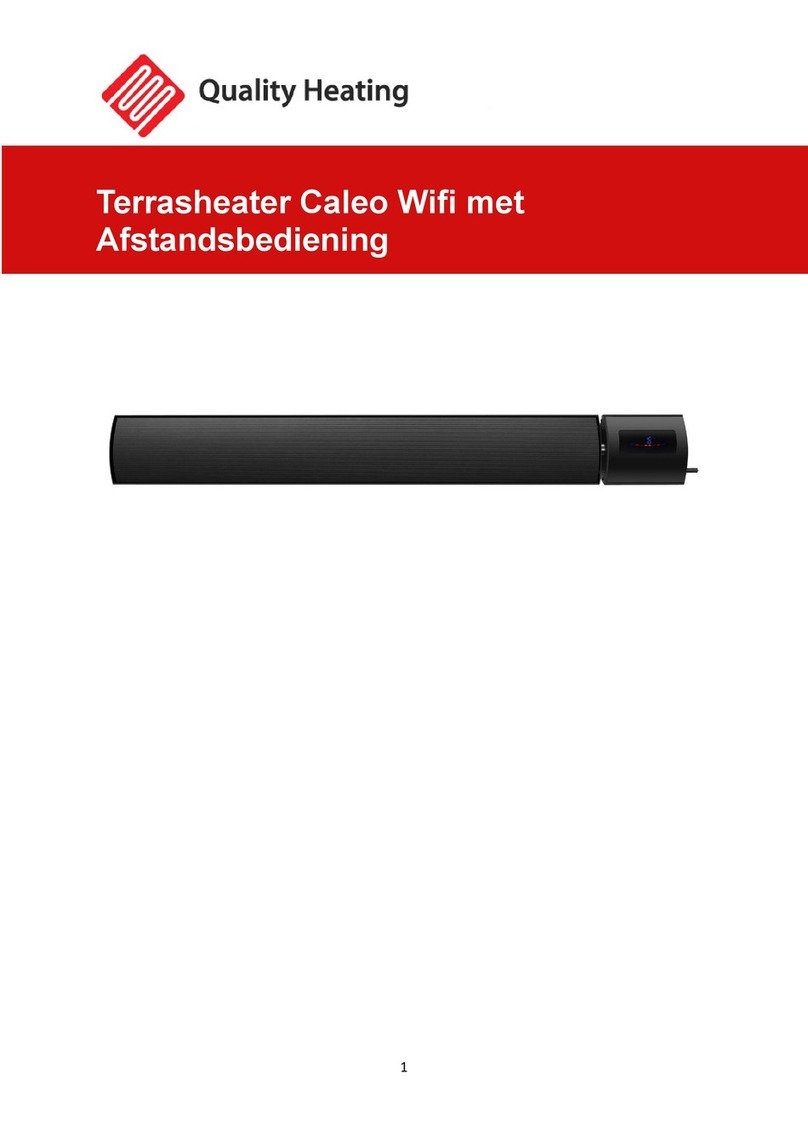
Warning
1. If you smell gas:
• Shut off gas supply to the appliance.
• If you still smell gas, immediately call your gas supplier
or the fire department.
2. Do not store gasoline or any other flammable vapors/
liquids near this appliance.
3. Designed for use outdoors or in amply ventilated areas
(minimum of 25 % of the surface area open – one open wall).
4. Improper installation, adjustment, alternation, service or maintenance can cause injury or
property damage. Read the manual thoroughly before installing or using this appliance.
5. This appliance must be installed and stored in accordance with the regulations in force.
6. Do not cover the ventilation holes of the cylinder housing.
7. Do not move the appliance when in use.
8. Shut off the valve of the gas cylinder or the regulator before moving the appliance.
9. The gas tube must be changed within the prescribed intervals.
10. Use only the type of gas and the type of cylinder specified by the manufacturer.
11. The gas tank used with this patio heater must meet the following requirements: 31,8 cm
diameter, 58 cm height with 15 kg capacity at maximum.
12. In case of strong wind blowing, attention must be taken against tilting of the appliance.
13. The injector in this appliance is not removable and is assembled by manufacturer only. It is
forbidden to convert from one gas pressure to another.
14. Do not connect the gas cylinder directly to the appliance without the regulator. Use only the
gas type and gas cylinder type specified in this manual.
• Use 30mbar regulator for butane/propane under the category I3B/P(30).
• Use 30mbar regulator for butane under the category I3+(28-30/37).
• Use 30mbar regulator for butane under the category I3+(28-30/37).
• Use 50mbar regulator for butane/propane under the category I3B/P(50).
Safety instructions
1. Do not use the patio heater for indoors, as it may cause
personal injury or property damage.
2. This outdoor heater is not intended to be installed on
recreational vehicles and/or boats.
3. Improper installation, adjustment, alteration can cause
personal injury or property damage.
4. Do not attempt to alter the unit in any manner.
5. Never replace or substitute the regulator with any regulator
other than the factory-suggested replacement.
6. Do not store or use gasoline or other flammable vapors or
liquids in the heater unit.
7. The whole gas system, hose, regulator, pilot or burner should
be inspected for leaks or damage before use, and at least
annually by aqualified service person.
8. All leak tests should be done with asoap solution. Never use
an open flame to check for leaks. Do not use the heater until


